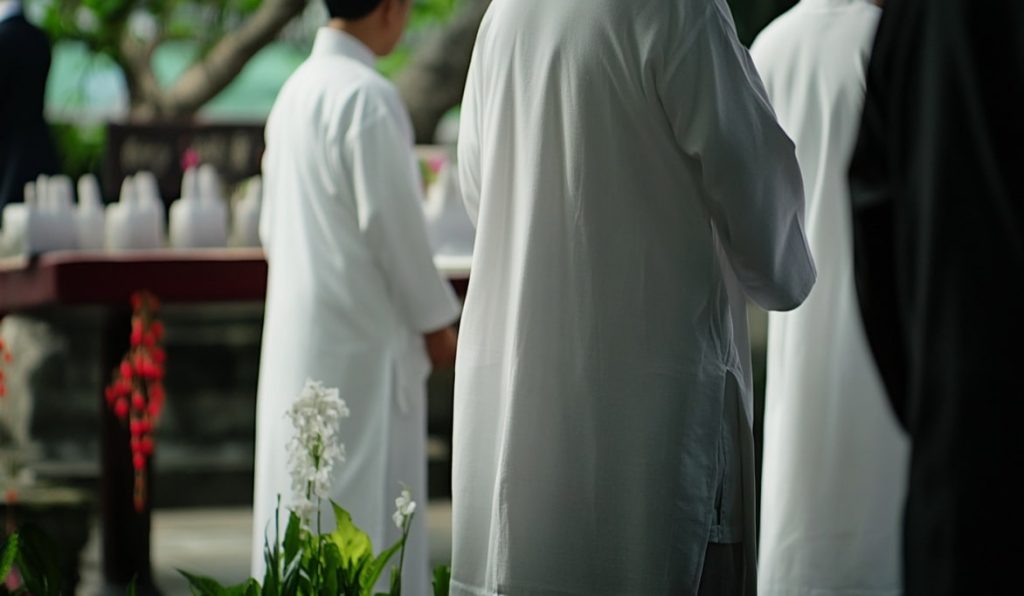Chinese Funeral Colors: Significance, Superstitions, and Traditions

In Chinese culture, colors hold profound significance, especially during funerals. The rituals surrounding death are deeply rooted in traditions that stem from ancestral respect and the belief in the afterlife. Understanding these customs—including the specific colors used in mourning—provides insight into the values and beliefs that shape Chinese funerary practices. Families seeking support during this poignant time often look towards establishments such as a Chinese Mortuary in Fullerton, CA, to guide them through the process.
The Primary Color of Mourning: White
In stark contrast to many Western cultures that associate black with grief, the Chinese predominantly use white at funeral services. This choice symbolizes purity, reverence, and returning to one’s origins. Wearing white clothing during mourning ceremonies echoes the intent to honor the deceased. Family members may wear white for several years after a loved one passes away, making white an enduring symbol of mourning in many households.
In a ceremony setting, white flowers and drapery often dominate, reinforcing the signaling of respect and mournfulness. Picture this: imagine a serene environment where softness commands the atmosphere, allowing for a genuine space of remembrance. It ties communities together, creating a collective experience where grief is acknowledged openly and compassionately.
Colors Signifying Spiritual Protection: Red and Yellow
While white is reserved for mourning, vibrant red and yellow should not be overlooked. Traditionally, these colors celebrate life and can contrast the somber tone of funerals. For instance, red—a color representing luck, happiness, and good fortune—can sometimes find its way into ceremonial elements, such as offerings or temple decorations sought after on remembrance days.
On the other hand, yellow, representing earth and stability, often appears in decorations or gifts to honor the deceased, providing a comforting presence in the landscape of grief. There may even be a duality in symbolism, where colors shift from mourning to celebrating the person’s life, creating a vast emotional spectrum during a time that can quickly feel monochrome.
Cultural Superstitions and Their Impact
Chinese customs are rich in superstitions surrounding funerals. For instance, away from color, specific practices—not directly involving color—manifest from beliefs that harmony with the spiritual realm can be maintained through auspicious actions. For some families, the number of family members attending and their attire become a subject of careful consideration.
Another intriguing aspect is the arrangement of flowers: specific blooms can attract spirits if placed incorrectly; therefore, their colors often dictate the message being sent beyond the physical space. These small yet significant choices reflect a comprehensive worldview that sees the connection between the material and the spiritual, recognizing that color is just one component of an intricate socio-cultural narrative.
Caring and Compassionate Services
Cultural practices evolve but retain their core values—especially when they involve the care of our loved ones. Finding an empathetic partner for families navigating these customs surrounding sorrow becomes imperative. Especially in environments like a Chinese Mortuary in Fullerton, CA, one can find understanding staff who appreciate the significance of these traditions. They serve as event organizers and collaborative community members who validate cultural idioms while providing practical guidance, highlighting an extraordinary amalgamation of empathy and expertise.
The colors used during Chinese funerals carry immense significance, reflecting a complex interplay of respect, belief, and emotion. White represents mourning and purity; meanwhile, red and yellow offer life and protection, juxtaposing sorrow with a sense of reassurance and remembrance. Comprehending these cultural intricacies allows us to honor our heritage while supporting bereaved families.
At Sunnyside Mortuary, we understand the importance of these traditions and remain committed to providing respectful services that uphold cultural beliefs. We invite families to contact us with any questions or for support during this critical phase—let us help you navigate your journey with the dignity and grace it deserves.


